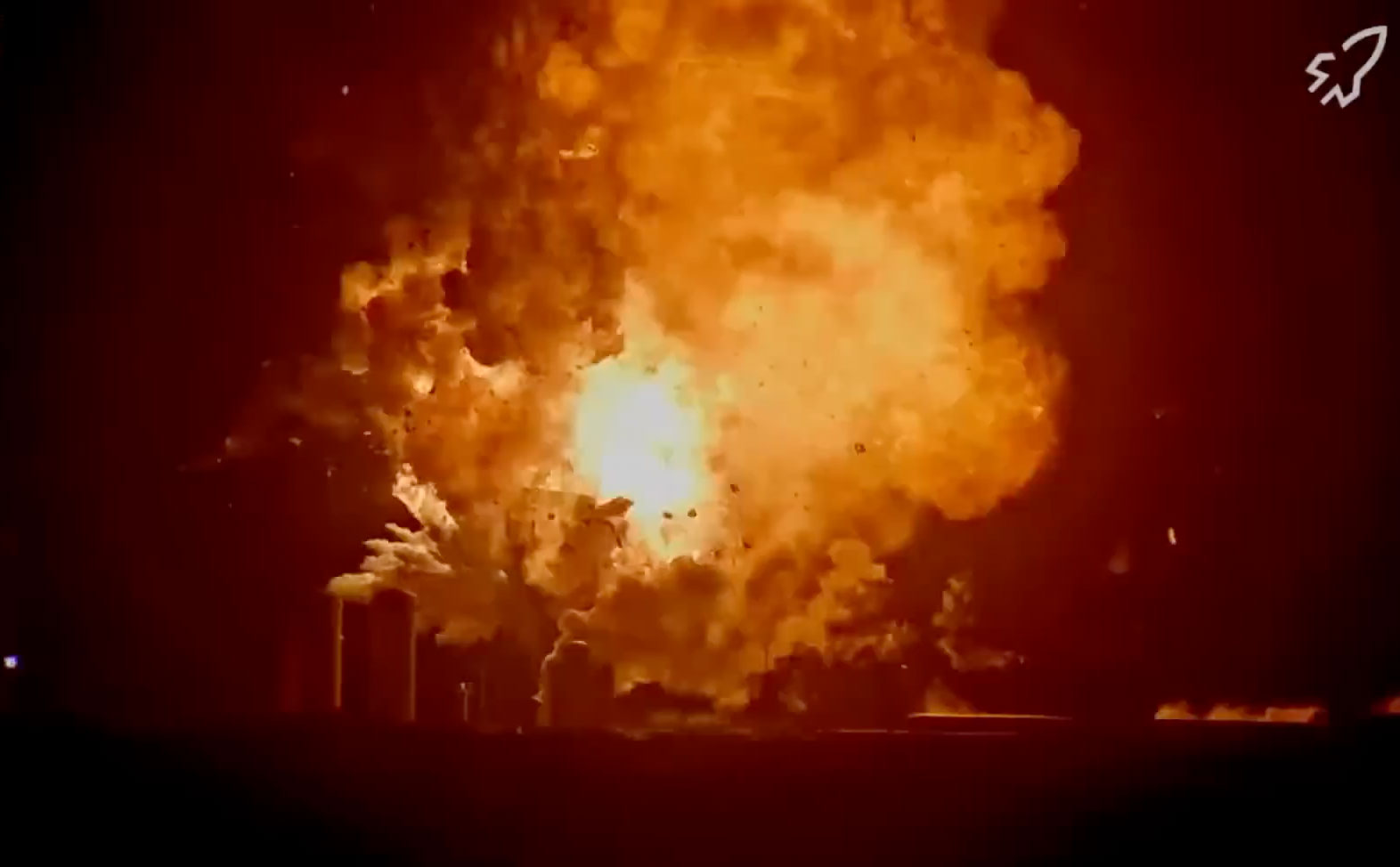SpaceX Starship 36 Explosion during a cryogenic fueling test at Starbase, Texas, due to a high-pressure failure in a nitrogen tank. No injuries reported. Here’s what happened and what it means for future flights..
SpaceX Starship 36 Explosion-Starship 36 erupts in a fiery explosion during high-altitude test flight, marking another step in SpaceX’s iterative rocket development process ( image credit SpaceX ).
SpaceX Starship 36 Explosion! Flight 10 Explodes During Descent, But Hits Key Milestones
Boca Chica, Texas –On June 18, 2025, SpaceX experienced a major setback when its Starship upper-stage prototype, Ship 36, exploded during pre-flight testing at the company’s Starbase facility in Boca Chica, Texas. The explosion happened around 11 p.m. local time during a cryogenic fueling and static-fire test.
According to early investigations, the cause of the explosion was likely a failure in a pressurized nitrogen tank, called a Composite Overwrapped Pressure Vessel (COPV), located in the payload section of the vehicle. The failure caused a leak that led to an uncontrolled release of methane and liquid oxygen, triggering a massive explosion.
The entire vehicle was destroyed, and the explosion damaged the test stand infrastructure. Fortunately, no injuries were reported, as all safety zones were cleared before the test began. The incident was visible from several miles away and created shockwaves that rattled nearby homes.
Flight 10 Overview: What Went Right
Starship 36 was expected to be part of the upcoming Flight 10 mission. Following the explosion, SpaceX will now likely move forward with another prototype, possibly Ship 37. This will delay the Flight 10 mission, which was originally planned for late June 2025.
Flight 10 is part of SpaceX’s ongoing effort to develop a fully reusable rocket system capable of carrying humans and cargo to the Moon, Mars, and beyond. While such failures may seem alarming, they are part of SpaceX’s rapid development and testing process.
The booster performed a boost-back burn and appeared to initiate a controlled descent, but it did not complete a successful landing. The upper stage reentered Earth’s atmosphere and exploded during its descent over the Gulf of Mexico.
SpaceX Starship 36 Explosion: What Happened?
This is the fourth failure involving a Starship upper-stage vehicle in 2025, following previous issues with Ships 31, 33, and 35. Each incident provides valuable data that helps improve the design and reliability of future Starship systems.
SpaceX’s “test early, fail fast” strategy is designed to identify weaknesses and make rapid improvements. Engineers will now study the failure closely to prevent similar issues in future tests.
Despite this incident, SpaceX remains committed to its goal of developing the world’s most powerful and fully reusable space transportation system.
Despite this incident, SpaceX remains committed to its goal of developing the world’s most powerful and fully reusable space transportation system.
SpaceX Starship 36 Explosion! What Comes Next for Starship
Despite the loss of Ship 36, the flight is considered a partial success by both SpaceX and industry observers. Every Starship test adds valuable data that will help refine future designs and operations. SpaceX is already preparing Ship 37 and future prototypes for upcoming test flights later in 2025.
These tests are a critical part of SpaceX’s mission to:
- Develop a fully reusable two-stage rocket
- Enable large-scale cargo and human missions to the Moon, Mars, and beyond
- Reduce the cost of space access dramatically
SpaceX’s Starship is also a key part of NASA’s Artemis program, which plans to use a modified version of Starship to land astronauts on the Moon.
A High-Risk, High-Reward Path
As SpaceX Starship 36 Explosion, Elon Musk and SpaceX have always taken a rapid iteration approach to rocket development. Failures are expected and even welcomed when they provide clear paths for improvement. The company has a strong track record of learning from test flight anomalies and incorporating changes quickly.
As with earlier flights, public livestreams and post-flight updates have helped SpaceX maintain transparency while also inspiring public interest in next-generation space technology.
Conclusion
While Flight 10 of SpaceX Starship 36 Explosion, it brought SpaceX closer to its goal of building a fully reusable spacecraft capable of deep space travel. With more test flights on the horizon, the Starship program remains a bold and active effort to transform the future of space exploration.
Sources:-
https://x.com/SpaceX/status/1935572705941880971?t=0v0Ael6FjomQbBFIdxA42g&s=19
https://youtu.be/71AwkBt3_ts?si=eKuQAq3dLJBcVoan
More About SpaceX Starship 36 Explosion
Flight 10 Test Flight
Frequently Asked Questions (FAQs)
1. What caused the SpaceX Starship 36 explosion?
The explosion was caused by a failure in a high-pressure nitrogen tank called a Composite Overwrapped Pressure Vessel (COPV). The tank likely ruptured during fueling, causing methane and oxygen to mix and ignite.
2. When did the explosion happen?
The explosion occurred on June 18, 2025, around 11 p.m. Central Time during a ground test at SpaceX’s Starbase facility in Texas.
3. Was anyone injured in the explosion?
No, there were no injuries. SpaceX had cleared all personnel from the safety zone before the test began.
4. What was the purpose of the test?
The test was part of a static-fire and cryogenic fueling procedure to prepare Starship 36 for its role in an upcoming orbital test flight.
5. How much damage was done?
Starship 36 was completely destroyed. The test stand and parts of the infrastructure at the Massey test site were also damaged by the explosion.
6. Will this delay future Starship flights?
Yes, the planned Flight 10 mission will be delayed. SpaceX is expected to use a different vehicle, possibly Ship 37, for the next launch attempt.
7. What is the Starship program?
Starship is SpaceX’s next-generation launch system designed for long-distance space missions. It aims to carry people and cargo to the Moon, Mars, and other destinations.
8. Has SpaceX faced similar incidents before?
Yes, Starship prototypes have faced multiple test failures in the past. SpaceX uses these failures to improve the rocket’s design and performance.
9. What happens next after the explosion?
SpaceX will investigate the cause of the failure, make design changes if needed, and prepare another Starship prototype for the delayed Flight 10 mission.
10. Why do these explosions happen during testing?
Testing involves pushing the rocket systems to their limits. Failures help engineers identify problems early and improve future designs. This is a key part of SpaceX’s development strategy.
You May Also Like This
https://spacetime24.com/honda-launches-reusable-rocket/
Venturi Space Reveals- Mona Lena Lunar Rover: Europe’s Bold Step Toward the Moon

